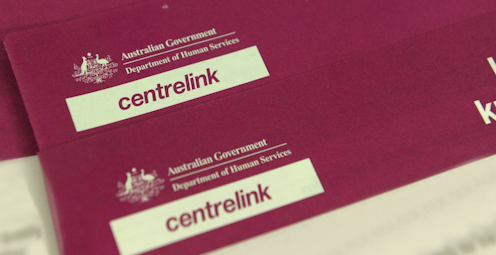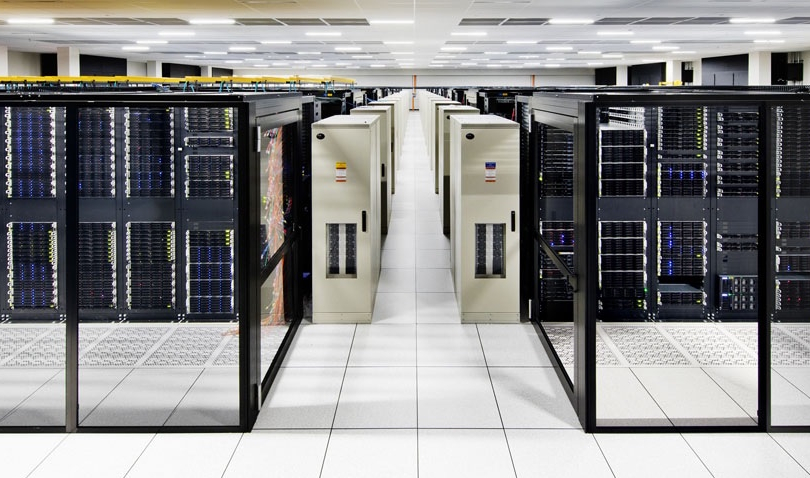Australians on unemployment benefits are set for two record paydays – but it's a sign of a broken system, long overdue for a fix
- Written by Peter Martin, Visiting Fellow, Crawford School of Public Policy, Australian National University

Australians on our humiliatingly-low unemployment benefit are about to get their biggest payday ever.
On September 20, the single rate of JobSeeker will climb A$25.70[1] per fortnight from $642.70 to $668.40. That’s the biggest automatic increase since the payment began at the turn of the 1990s, and twice as big as the next-biggest.
But it will still be a pitiful $17,378[2] a year – not even two-thirds of the way to meeting the Melbourne Institute’s poverty line of around $28,600 a year[3].
If the official forecasts turn out to be correct, the next increase (on March 20) will be of a similar order, meaning JobSeeker will have jumped 7.75% in a year, which ought not to be surprising, because inflation[4] will have reached 7.75%.
Until now, pensioners have had a better deal
JobSeeker is linked to inflation, the rate of increase in prices[5], which has been low since the early 1990s. Wages and national income per person have climbed faster.
Pensioners, including age pensioners, have had a better deal. Since the 1990s, their incomes have been linked to male total average earnings[6], with a bonus clause that gives them inflation if male earnings don’t climb enough.
The difference between the growth in male earnings and inflation hasn’t amounted to much in any given year – typically 0.6 percentage points, meaning that if inflation was 2.5%, wages were likely to climb 3.1%.
But because wages nearly always grew by more than inflation, even if not by much, over time the compounding of those differences came to matter a lot.
JobSeeker (when it was called Newstart) used to be close to the age pension. In 1997 JobSeeker was A$321.50 per fortnight, and the age pension was $347.80.
But an accumulation of larger percentage increases in the pension (and a one-off increase in the pension) meant that by 2019, on the eve of COVID, the pension was 50% bigger.
Projections based on the then-prevailing rates of inflation and wages growth suggested that, unless something changed, the pension would be twice as much[7] as JobSeeker by 2070.
So weak had JobSeeker become in relation to general living standards (well below the poverty line[8]) that early in COVID in 2020 the Coalition effectively doubled it by adding on a $550 per fortnight coronavirus supplement[9].
Not enough to ‘meet the cost of groceries’
In an implicit acknowledgement that JobSeeker was no longer enough to feed and house people, then Treasurer Josh Frydenberg said the temporary bonus would allow unemployed people to “meet the costs of their groceries and other bills[10]”.
When the temporary supplement ended, the treasurer lifted JobSeeker by only a little – $50 a fortnight, making the point that unemployment was meant to be temporary[11], whereas the age pension was for the remainder of a pensioner’s life.
There are two other important differences.
One is that the age pension goes to an identifiable voting bloc – the three in every five[12] Australians aged 65 and older. Dudding them would cost votes. There aren’t as many unemployed, and many of them are just passing through unemployment.
Matching JobSeeker to the pension would cost billions
The other difference is that JobSeeker is now so low relative to the pension that boosting it from its present $642.70 per fortnight to anything like the pension rate of $901 per fortnight would cost multiples of the $2.2 billion[13] per year the government budgeted for the $50 increase.
Unemployed Australians (and those on Youth Allowance[14] and other payments that have only increased in line with the consumer price index) seemed condemned to live an income so low as to raise concerns[15] even 12 years ago about:
issues about its effectiveness in providing sufficient support for those experiencing a job loss, or enabling someone to look for a suitable job
And no, those concerns about Australia’s comparatively low unemployment benefits weren’t raised from the Australian Council of Social Service – it was from the hardly radical Organization for Economic Co-operation and Development (OECD), in 2010. (These days the OECD is headed by former Liberal finance minister Mathias Cormann[16].)
Former prime minister John Howard has expressed regret[17] about allowing JobSeeker to fall so low relative to the pension. In opposition, Anthony Albanese said it was not enough to live on[18].
Abbott tried to put pensions in line with jobless benefits
Just for now, the collapse in wages growth and the resurgence in inflation has frustrated what seems to have been a deliberate decision to allow JobSeeker to grow more slowly than the pension.
But it ought to be frustrated for good. Whatever the arguments for setting JobSeeker lower than the pension (the Centre for Independent Studies says pensions are for those out of work for “legitimate reasons[19]”) there’s no defensible argument for a system that allows one to keep falling relative to the other.
Tony Abbott’s Coalition government deserves credit, sort of, for acknowledging this. In its first “horror budget[20]” in 2014, it promised to put pension increases on the same footing[21] as increases in the unemployment benefit.
Read more: There are lots of poverty lines, and JobSeeker isn't above any of them[22]
“We promised at the last election not to change pensions in this term of government and we won’t,” his treasurer told parliament.
But beyond the next election, from September 2017[23], pensions would only increase in line with inflation, in tandem with unemployment benefits.
Like much of the rest of that budget, the measure didn’t survive a change of treasurer and prime minister.
Cheaper than the Stage 3 tax cuts
In the lead-up to the 2019 election, Labor promised an independent review of JobSeeker. Albanese withdrew the promise ahead of the 2022 election, saying the budget could not withstand it[24].
His commitments were about priorities. The starting cost of the previous government’s legislated Stage 3 tax cuts, supported by Labor, is $17.7 billion[25] per year, which is less than making JobSeeker match the rate of the pension.
Half of the Stage 3 benefits accrue to Australians earning $180,000 or more[26].
Beyond the September 20 increase, lifting JobSeeker further in future would change the lives of Australians on $17,378[27].
In a Radio National interview on Monday, Albanese sounded as if he was open to doing something soon[28].
When inflation comes down, he won’t be able to rely on unusually high price rises to do the work for him.
References
- ^ A$25.70 (www.dss.gov.au)
- ^ $17,378 (www.dss.gov.au)
- ^ $28,600 a year (theconversation.com)
- ^ inflation (theconversation.com)
- ^ the rate of increase in prices (www.abs.gov.au)
- ^ male total average earnings (www.aph.gov.au)
- ^ twice as much (theconversation.com)
- ^ poverty line (theconversation.com)
- ^ coronavirus supplement (theconversation.com)
- ^ meet the costs of their groceries and other bills (ministers.treasury.gov.au)
- ^ temporary (www.9news.com.au)
- ^ three in every five (www.aihw.gov.au)
- ^ $2.2 billion (images.theconversation.com)
- ^ Youth Allowance (www.dss.gov.au)
- ^ raise concerns (cdn.theconversation.com)
- ^ Mathias Cormann (www.oecd.org)
- ^ regret (www.smh.com.au)
- ^ not enough to live on (twitter.com)
- ^ legitimate reasons (www.cis.org.au)
- ^ horror budget (www.theguardian.com)
- ^ same footing (images.theconversation.com)
- ^ There are lots of poverty lines, and JobSeeker isn't above any of them (theconversation.com)
- ^ September 2017 (archive.budget.gov.au)
- ^ budget could not withstand it (www.abc.net.au)
- ^ $17.7 billion (cdn.theconversation.com)
- ^ $180,000 or more (cdn.theconversation.com)
- ^ $17,378 (www.dss.gov.au)
- ^ doing something soon (www.abc.net.au)
Authors: Peter Martin, Visiting Fellow, Crawford School of Public Policy, Australian National University








